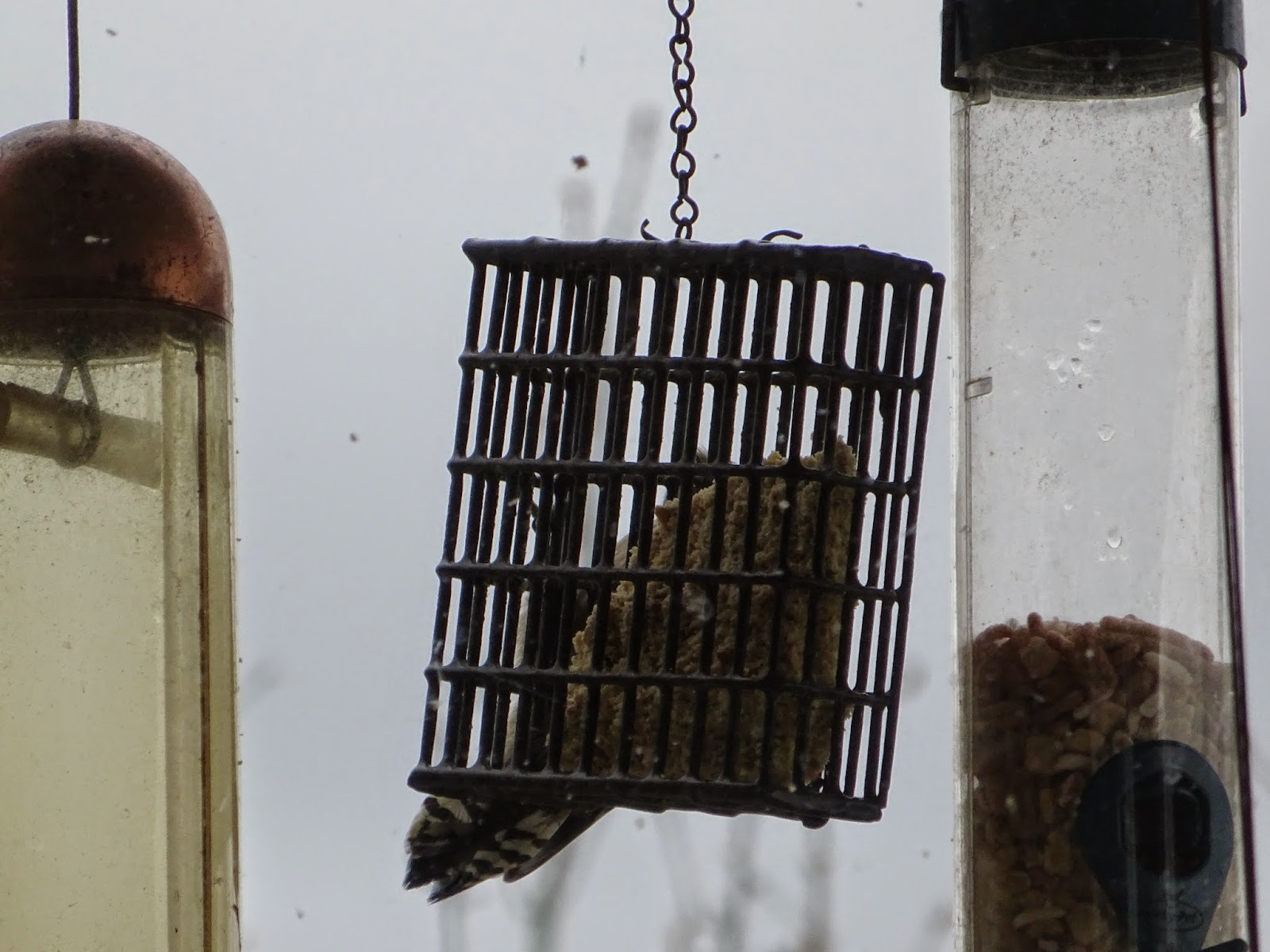I am been working to up my photography for the past few months. It is arguable whether I have improved much, but I am getting to know the settings on my newest camera much better, that cannot hurt. Let's just leave it at this: There is still a whole lot more for me to learn.
Simultaneously there has been this persistent downy woodpecker asking to be photographed just outside my living room window. As a kid I watched Woody Woodpecker at 9 am on Saturday mornings and since have developed a positive affinity to woodpeckers in general. In the past we have seen a pileated woodpecker out the same window, but lately it has only been this pesky downy.
 |
| Woody Woodpecker |
My downy is a pesky fellow for two reasons. a) Three times a day around sun rise, sunset and noon he has a habit of pecking at the wooden pole supporting our bird feeder. The feeder is made of aluminium so you know this pecking reverberates loudly. Sunset and noon are fine times for this racket, but sunrise not nearly as enjoyable. Yesterday he awoke me about 7 am not all that early, but yesterday I wanted to sleep in. b) This downy is well aware of how close he is to humans so he flits around nervously keeping close tabs on what is happening around him. Perhaps this is a characteristic that all wild animals have about survival, but I like to think my downy is special. Or maybe he is nervous because it is
that time of the year and he is hot to find a mate which is why he's rattling the heck out of the bird feeder in the first play. At any rate I do know when he's around.
Putting two dynamics together, I thought it would be great to get one clear photo of my downy either loudly tapping away or eating the suet we have out for him and other birds. During the process that has been underway daily for over a couple of weeks, several lessons have been learned.
- One will never be able to sneak up on this downy. Merely opening the sliding door to get a direct shot of him from the outside sends him flying away.
- He doesn't hammer away for very long. One must have the camera out of the case and ready for immediate action or again he is gone.
- Since he is leery about what is happening inside the house he tends to face it. This means it is very difficult to get a photo showing off the bright red band at the back of his head. Without that pop of colour the photo will be something short of all it can be.
- Using a zoom lense that magnifies 20 times requires a steady hand. I must hold my breath to get a somewhat decent shot. Plus if he is pecking away there is going to be a bit of movement captured, my camera isn't that well refined to capture or suppress such activities.
- When it is sunny the reflections of the house windows show up in the photos. Cloudy or rainy days make for better shots. And because my downy likes to hide out under the bird feeder, perhaps to get out the rain, he tends to hang around for a longer period of time during the rain.
- I have developed a sincere and deeper appreciation for wildlife photographers. They must have the patience of Job. All my photographs were taken from the comfort of the inside of my own home. What would it be like to be in the middle of the jungle and trekking through snow fields to get wildlife photos? Clearly, not for me.
 |
| Close, but cut off his tail |
Of course as I finish writing this at 12:10 pm my downy is letting me know he is around again.
 |
Although not perfect, he was moving indeed!
I am satisfied nonetheless.
|






Comments
Post a Comment